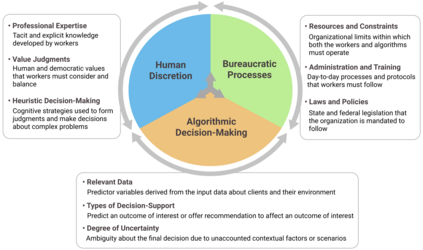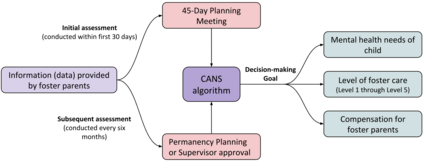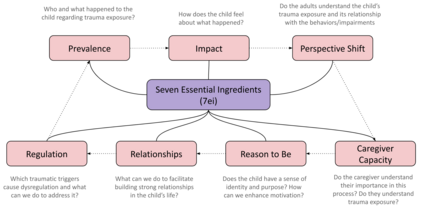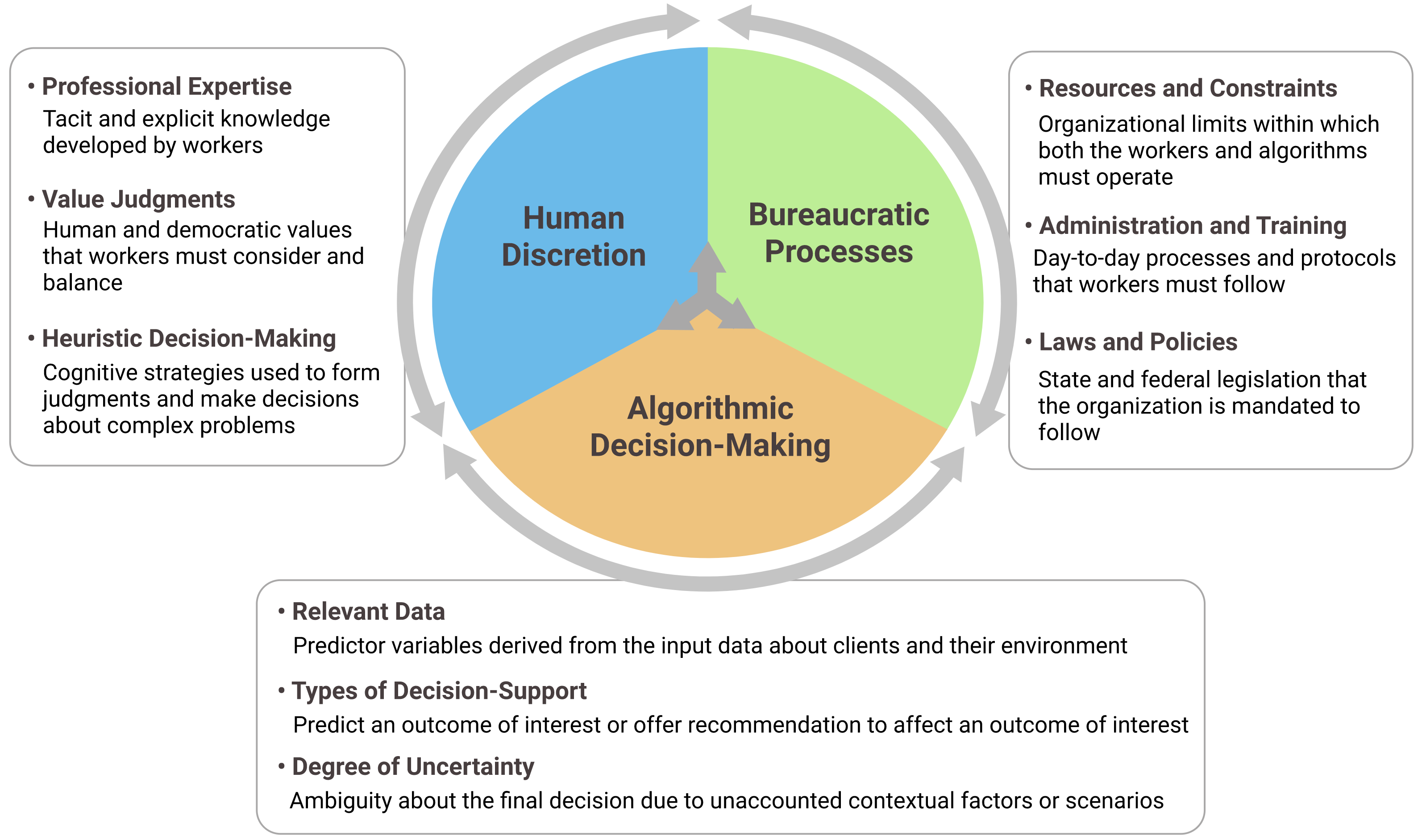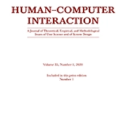Algorithms have permeated throughout civil government and society, where they are being used to make high-stakes decisions about human lives. In this paper, we first develop a cohesive framework of algorithmic decision-making adapted for the public sector (ADMAPS) that reflects the complex socio-technical interactions between \textit{human discretion}, \textit{bureaucratic processes}, and \textit{algorithmic decision-making} by synthesizing disparate bodies of work in the fields of Human-Computer Interaction (HCI), Science and Technology Studies (STS), and Public Administration (PA). We then applied the ADMAPS framework to conduct a qualitative analysis of an in-depth, eight-month ethnographic case study of the algorithms in daily use within a child-welfare agency that serves approximately 900 families and 1300 children in the mid-western United States. Overall, we found there is a need to focus on strength-based algorithmic outcomes centered in social ecological frameworks. In addition, algorithmic systems need to support existing bureaucratic processes and augment human discretion, rather than replace it. Finally, collective buy-in in algorithmic systems requires trust in the target outcomes at both the practitioner and bureaucratic levels. As a result of our study, we propose guidelines for the design of high-stakes algorithmic decision-making tools in the child-welfare system, and more generally, in the public sector. We empirically validate the theoretically derived ADMAPS framework to demonstrate how it can be useful for systematically making pragmatic decisions about the design of algorithms for the public sector.
翻译:在本文件中,我们首先开发一个符合公共部门需要的逻辑决策统一框架(ADMAPS ), 反映为美国中西部大约900个家庭和1300名儿童服务的儿童福利机构内部日常使用的算法的复杂社会-技术互动。 总体而言,我们发现,需要通过综合人类-计算机互动(HCI)、科学和技术研究(STS)和公共行政(PA)领域的不同工作结构,将人类-计算机互动(HCI)、科学和技术研究(STS)和公共行政(PA)领域不同的工作组合起来。我们随后运用ADMAPS 框架,对一个深入的、为期八个月的文体学案例研究进行定性分析,以反映出在为美国中西部大约900个家庭和1300名儿童服务的儿童福利机构内部日常使用的算法之间的复杂社会-技术互动。 总体而言,我们发现,我们需要将基于实力的算法结果集中在社会生态框架中。 此外, 算法系统需要支持现有的官僚程序进程,并增强人类决策的高级算法框架,而不是在系统内部设计中, 购买一个儿童分析的结果。

